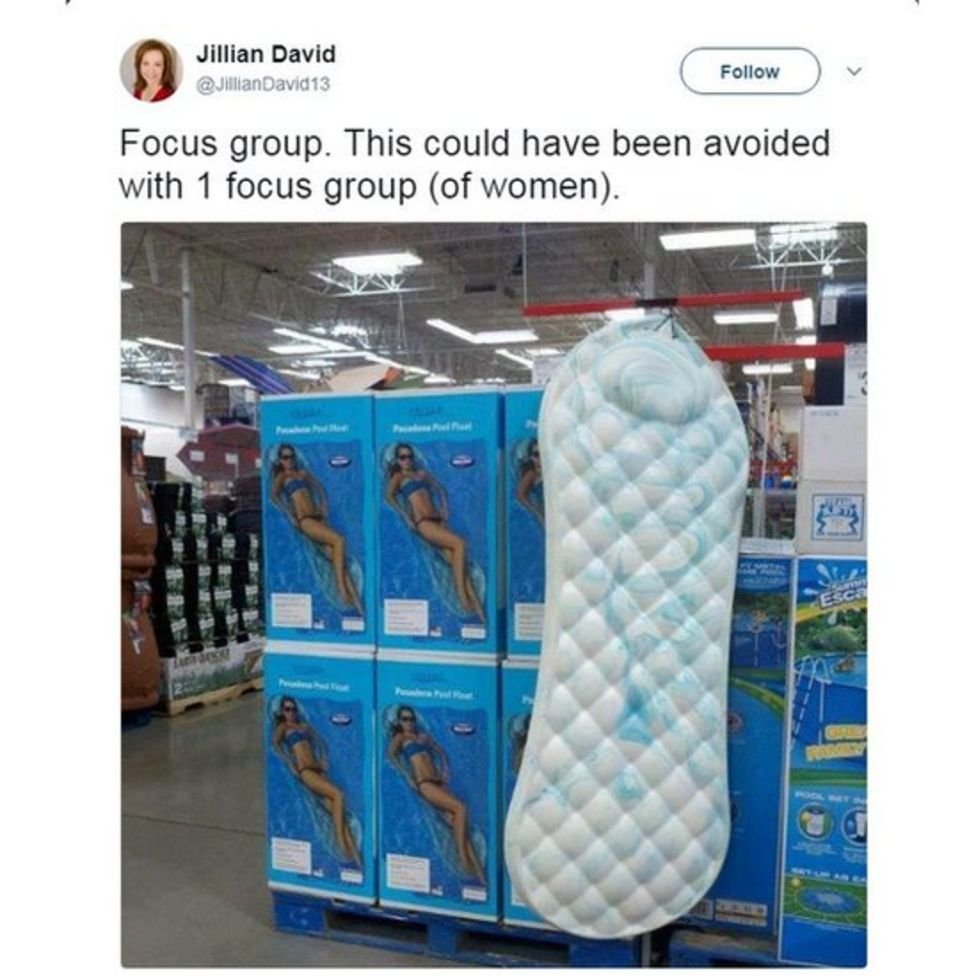Epic Design Fails (and Five Ways to Avoid Them)
Enjoy some of the best of the worst design fails, and learn from the professionals just how to avoid making the same mistakes.
It wouldn’t be April without some fools, right?
At our studio, we think of industrial design as a partnership between makers and manufacturers, where we help craft the form, function, and style of a product. Striking that balance is key to designing a great product. When designers lose sight of one or more of those fundamentals, things can go very, very wrong.
We found some of the best of the worst design fails and considered what principle the creators failed to consider during the design process. Here are five ways to avoid making a meme-worthy design fail:
1. Diversity makes things better
This is true in life and in design. But this principle particularly applies when designing products. For example, having a female present while drafting this pool float would have prevented…well, this. Still not sure why they left out the armrests. It would've been comfortable and leak-proof.
But seriously, maintaining a homogenous design environment is simply bad practice. An inclusive, diverse studio or design team has a competitive advantage, as multiple perspectives can provide opportunities for growth, offer new and better solutions, and circumvent pitfalls.
2. Someone should always ask, “why though?”
Ball-point pens don’t work in space. Without gravity, ink can’t travel to the pen tip. This was a big problem for our astronauts, so NASA scientists devoted ten years and millions of dollars to create a product that would write in zero-g. The Russians? They used pencils.
No offense to NASA, but if an accessible and inexpensive alternative already existed, someone should have raised their hand and asked, “...why are we doing this?” Sure, creating a pen that can defy the laws of physics is neat. Heck, we’d love a few of those pens. But good design requires that we take a step back and ask the right questions.
Cause some things are just unnecessary, you know?
3.Context, context, context
Bad design can also happen when we fail to put the design in context. You want to make a camouflage golf ball? Cool! Except…camouflage makes things hard to see. Probably not great in a game of golf, where you need to be able to find your ball.
Of course, with CAD modeling software, you can actually test your design in its proper context. Or test it in various contexts. For example, if you design carpet, maybe test how your pattern will appear on a flight of stairs before manufacturing it. You just might save someone’s neck.
3. Function matters, y’all
This really should go without saying, but unfortunately, we live in a world where things like this happen:
Then there are the “barely functional” designs. These are the things that work, but produce an inordinate amount of anxiety for anyone using them. We think the Apple pencil and the Apple mouse belong in this category. Every time we charge the pencil, we expect it to snap in half. And the mouse? It doesn’t take a design genius to think of better ways to charge this thing.
Not every idea is a good idea. Challenge yourself to find a solution that will enable your product to function well.
4.Honor the design’s integrity
For this principle, we turn our attention to cars. There are many examples of vehicles that fell far short of their design promise. The most well-known of these has got to be the Pontiak Aztek, which was originally designed with Hummer-like proportions. It was going to be big, aggressive, and tough. Then someone decided to put it on a car frame. It was like a dude with a dad-bod trying to dress like a weight-lifter. Cringeworthy.
Then you have the Ferrari F12. This car is gorgeous. Beautiful proportions, well-balanced, just a delight to behold…until it drives away, and you see the unmistakable outline of a thong. Who invited Sisqó to the design meeting?
Another example: the Plymouth Prowler. We love this 1930s hot rod design. It would make the perfect getaway car, except for the fact that it has a V6 engine. That’s like bringing a pony to the Kentucky Derby and expecting it to compete. A lot of people were disappointed.
Basically, there needs to be continuity between the product you promise and the product you deliver. You need to honor the customer’s expectations, the brand history, and the original design intention. When you lose sight of these things, you risk striking the wrong chord.
The easiest way to avoid design fails? Hire professionals like us.
More than anything, industrial design is concerned with crafting the form, function, and style of a product. Contact us to learn more about what we can do to help your company craft bespoke products.








